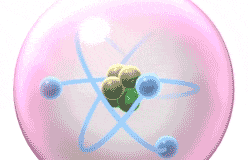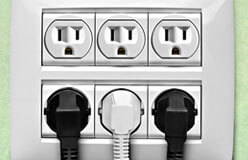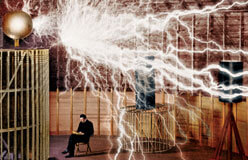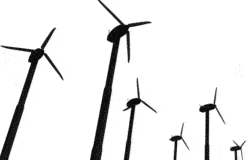There’s only one type of electrical energy. But it’s often split into two categories. Those categories are static and dynamic.
We give the Greek scientist Thales (640–546 B.C.) credit for first noticing electrical effects. He rubbed amber against silk in an experiment. This caused nearby lightweight objects, such as feathers, to move toward the amber. The feathers stuck to the amber. Here’s why it happened.
Objects usually have the same number of positive (+) and negative (–) electric charges. They cancel each other out. But rubbing the amber moves electrons from atoms in the silk to atoms in the amber. That gives the amber a negative charge. Imagine holding the amber above a feather. The amber’s negative charges push away the feather’s negative charges. That makes the charges move onto the ground the feather was touching. Then the feather becomes positively charged. Things with the same charge repel each other. Things with opposite charges attract. If the pull is strong enough, the positively charged feather will move toward the negatively charged amber.
What Thales did was show static electricity in action. In fact, the word electricity comes from the Greek word for amber.
We use electricity to light and heat our homes. We use it to run our appliances. But that’s not static electricity. It’s dynamic electricity. Dynamic electricity refers to a steady flow of electrons between places and things. It needs to flow through a conductor. A conductor is a material that lets electrons pass freely through it. For example, copper is a conductor. An energy source gets the electrons moving. The source might be a battery or generator.







